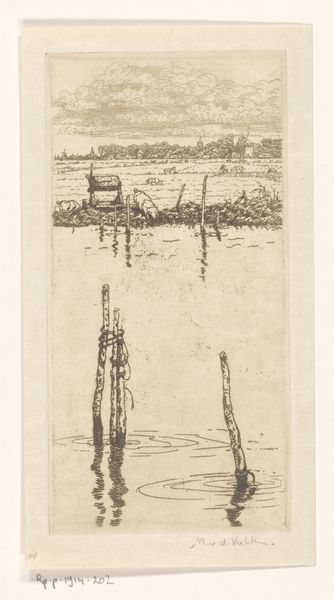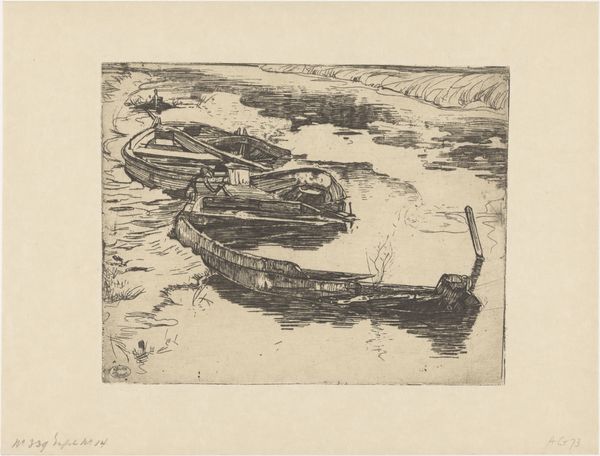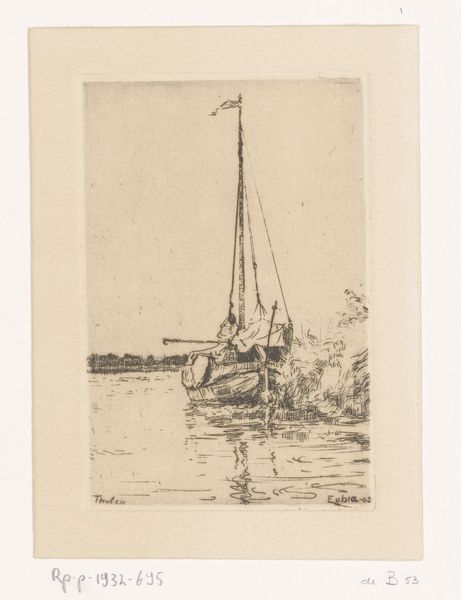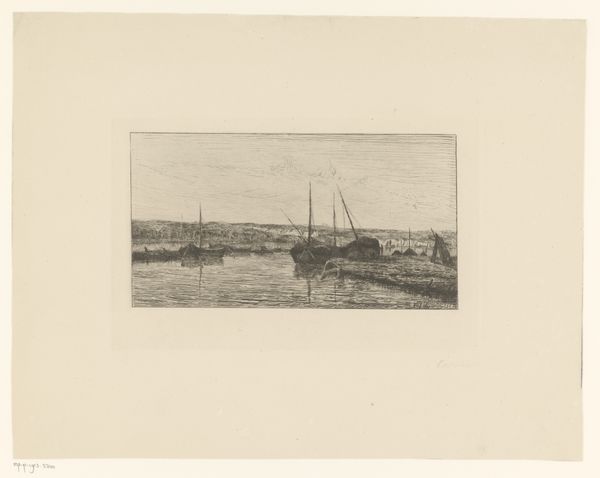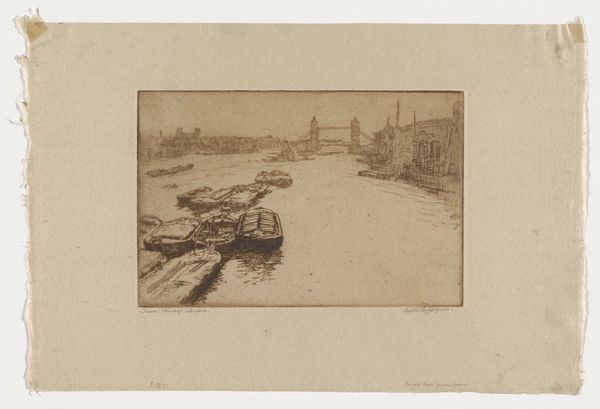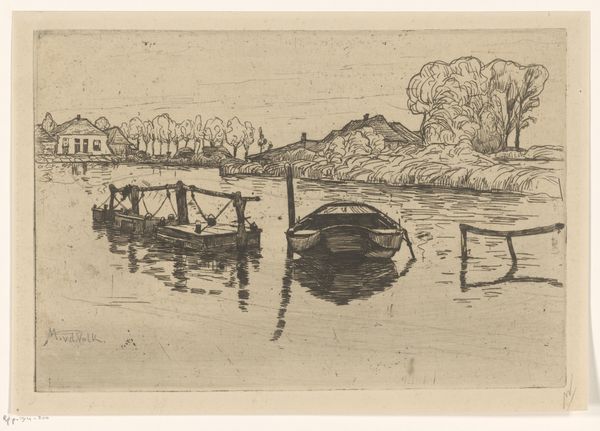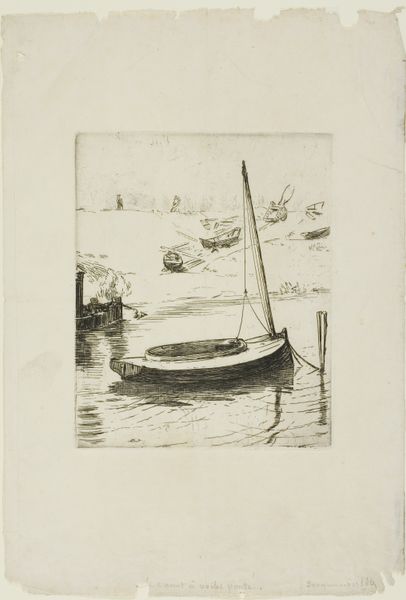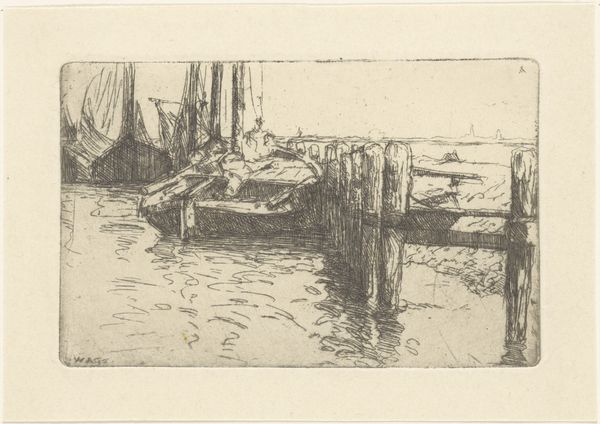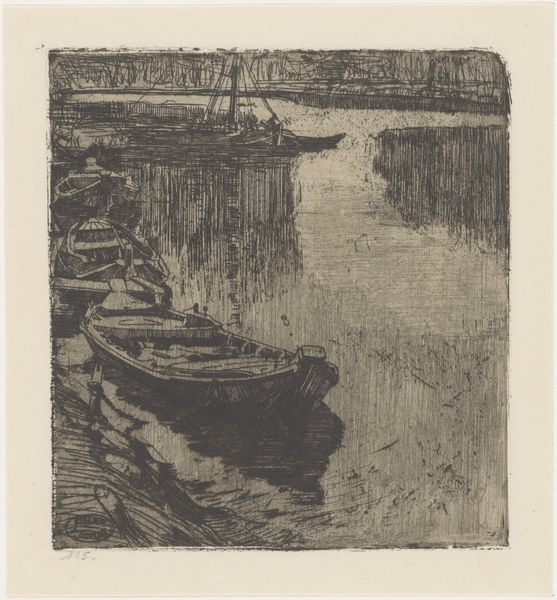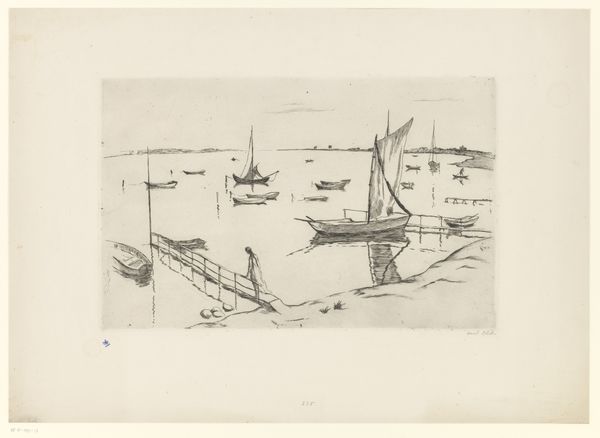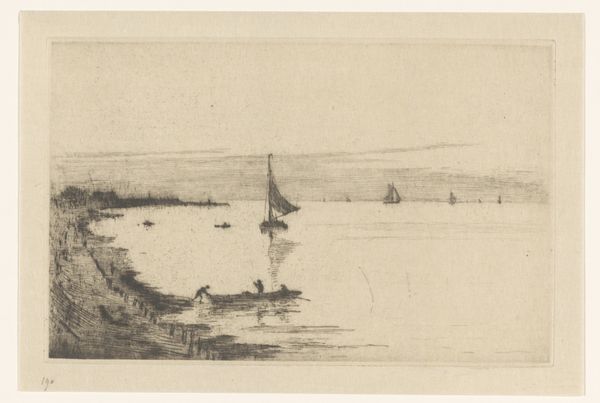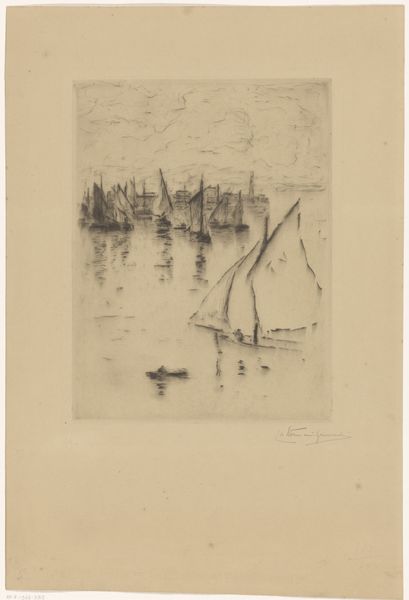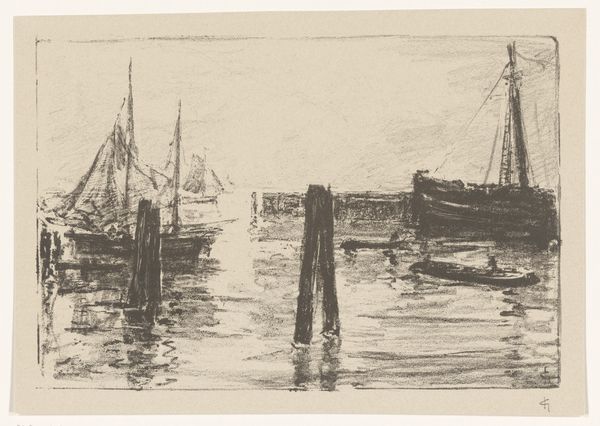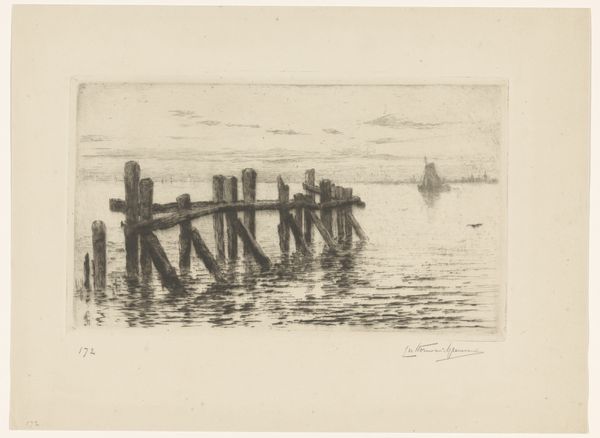
print, etching
#
dutch-golden-age
# print
#
etching
#
landscape
#
realism
Dimensions: height 198 mm, width 99 mm
Copyright: Rijks Museum: Open Domain
Editor: So, this etching is titled "Schuitje bij Warmond," and it was created sometime between 1867 and 1914 by Maurits van der Valk. The textures in the water seem so alive, despite it just being an etching. What do you see when you look at this piece? Curator: I notice the artist's labor in rendering this commonplace scene. The repetitive act of etching the lines, the crafting of the plate – it speaks volumes about valuing the ordinary. What purpose did that manual labor serve? Was it merely descriptive, or was it elevating the working life to a form worthy of our contemplation? Editor: That's fascinating! I hadn’t considered the labor involved. I was mostly thinking about how idyllic the scene felt. Is that something that chimes with a Materialist perspective? Curator: Well, it depends on *how* we think about it. Instead of "idyllic," let's consider what the imagery represents in a broader economic or class context. What does the presence of this boat and implied landscape indicate? It probably indicates fishing, transportation, local trade and what can the art-making process and materials say about those activities? Editor: It's making me think about how, even in something seemingly simple like this, there's a whole world of work and material processes going on, both in the scene and in the creation of the artwork itself. Curator: Exactly! We tend to focus on aesthetics and symbolism, and can overlook these material conditions, but art is fundamentally *made* through these things. What implications are present by depicting such simple everyday items? Editor: That gives me so much to think about in other artworks as well – the process behind them and the social context in which they were made! Curator: And by thinking about production in that way, maybe we can move beyond seeing a “Dutch Golden Age landscape,” to recognizing all the hidden narratives within it.
Comments
No comments
Be the first to comment and join the conversation on the ultimate creative platform.
